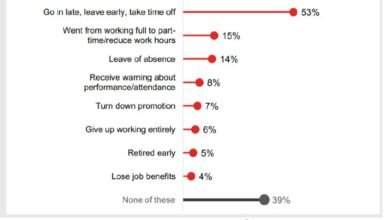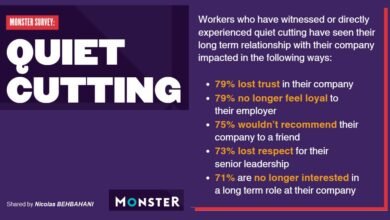
By | Dave Ulrich | Speaker, Author, Professor, Thought Partner on HR, Leadership, and Organization
People matter.
Caring for people in organizations is a timeless principle. When employees find purpose and meaning (believe), learn and grow (become), and feel respected and connected (belong), they have a better work experience. Employee experience is a lead indicator of the ability of an organization to reinvent strategy, serve customers, increase investor confidence, and build community reputation.
Evolution to Personalization
How to create a positive employee experience has evolved over time, as noted in figure 1.

- Participative management: Coming out of the scientific management era, leaders discovered that when they involved employees in decisions, listened to, and empowered them, employees were more engaged.
- Employee value proposition: Employees seek equity where those who contribute more get more rewards—a fair employee value proposition.
- Diversity and inclusion: All employees deserve to be treated with respect so that differences become strengths (diversity) and employees belong and connect (inclusion).
- Personalization: Personalization occurs in product design as mass customization, in gift giving as customized gifts, and in technology as data-driven insights. In organizations, personalization is about caring for the person through leadership emotion, empathy, engagement, and efficacy. These E words show up with increased attention on affinity in relationships. Personalization at work also refers to creating more customized work experiences through turning workplace flexibility practices (benefits, hours worked, locations, workweek, sabbaticals, job sharing) into personal choices tailored to the needs of each employee (see figure 2).

Through personalization, each employee has a unique definition of what success means and the ability to navigate paradoxes to be successful.
Why Employee Personalization Matters More
The evolution of employee experience to personalization comes from an emerging work context.
- Technology redefines where and how work is done so boundaries of work are less about space and more about shared values (why and what work is done). Employees can work anywhere, anytime.
- Information ubiquity allows leaders to discern what matters most to each employee so that employee development can be tailored for each employee. Employee careers are less often about progress through prescribed career stages and more about personal choices.
- Next-generation employees often have different expectations about mobility, opportunity, and voice. Gen Z employee mindsets are more about how work facilitates their relationships and growth, which are unique to each employee.
- In a world of increased uncertainty and change, what delivers employee experience for a previous generation, other colleagues, or even oneself in the past may not be the same as what works for someone right now. Employee experiences and expectations at work change frequently.
Personalization matters so that employees have a more positive work experience, leaders have impact, and organizations deliver value to stakeholders.
How to Lead in a Personalized World
Often leaders think personalization means that employees are entitled to do what they want, when they want, and how they want. Entitlement is not personalization because entitlement will not often allow an employee to reach his or her definition of success. When employees feel entitled, they might act as narcissists putting their needs ahead of others, which ultimately keeps them from meeting their needs.
The following steps help leaders personalize employee experience.
1. Help employees define success.
Leaders who personalize work first help employees clarify their definition of success. This comes by asking employees what they want or how they define success. Answering these questions leads to a conversation to create realistic expectations that align personal success with organizational requirements.
2. Define and identify paradoxes required for employees to achieve their success.
Achieving personal and organizational success comes from making personalized choices to navigate four paradoxes that define how employees accomplish work. Figure 3 lays out four paradoxes that employees navigate to turn their personal goals (yellow circle) into positive outcomes (green circle). Each of the four paradoxes is characterized by anchors that represent ways employees approach work to achieve their goals.
A. Recipient Paradox: Take Care of Self and Serve Others
To reach goals, leaders can help employees take care of themselves by recognizing their physical, social, emotional, and intellectual needs and strengths. In addition, leaders help employees serve others by helping them improve. Through navigating the recipient paradox, employees use their strengths to strengthen others.
B. Responsibility Paradox: Agency and Accountability
Leaders encourage employee responsibility where an employee has agency, or the autonomy and freedom to make choices by and for oneself. In addition, leaders help employees be aware of the accountability of those individual choices and the effect they have on others. An employee can focus on “I have the right to do what I want, when I want, and how I want.” and also navigate “I have to recognize the consequences of my choices on myself and others.” Navigating the responsibility paradox personalizes freedom of agency and the accountability of collective action.
C. Reciprocal Paradox: Care and Compete
Leaders show empathy and compassion to employees so that they feel cared for and physically and psychologically safe. And leaders need to make sure that employees contribute to success, both for themselves as individuals and also for their organization in the marketplace. In this reciprocal relationship between caring and competing, leaders help employees recognize that without success in the marketplace, they have no workplace. Reaching personalization goals requires feeling good about oneself (care) and being willing to push oneself to new challenges (compete).
D. Progress Paradox: Stability and Change/Agility
Leaders help employees progress towards their goals by learning from the past, relying on and evolving accepted systems to make things happen, and being predictable. They also encourage progress by helping employees create a future by anticipating what can be, experimenting, and learning from failure. Reaching personal goals navigates the progress paradox by dealing with the risk of repeating the past and the risk of an unknown future.

3. Ask employees to rate their predisposition for each of the four paradoxes.
For each of the four paradoxes, employees can indicate their predisposition for each paradox. We illustrate this in Figure 3 with two paths (1 and 2) and square boxes for each of the paradoxes. These predispositions then create a current pathway that employees use to accomplish their goals (connect the boxes for person 1 and person 2 with solid lines)
4. Discuss with employees where they should be in terms of navigating each of the four paradoxes. In Figure 3, employees can recognize how their approach needs to change for each paradox (circles for person 1 and person 2). These circles can be connected (dotted lines) to show the desired paradox navigation to reach goals. By creating this paradox map of current and future work choices, leaders can expand employees’ views of how they might act to attain their goals.
5. Recognize that each employee may have different definitions of success and pathways to navigate paradoxes to attain success.
Personalization means that not every employee will have the same definition of success or tendency among the four paradoxes (in Figure 3, pathway 1 and 2 are different). Leaders personalize when they help employees see that they can achieve their goal by finding their personal pathway through the paradoxes.
6. Expand skills to overcome predisposition to achieve success.
With the four paradoxes defined and predisposition identified, leaders can help employees learn the skills to navigate the paradox pathway that works for them. We have identified five skills employees can develop in order to learn to be a paradox navigator (figure 4).

Conclusion:
Stipulate that people matter for organization success. By building on participation, employee value proposition, diversity/inclusion, and moving to personalization, leaders can help employees have better work experiences. Then, by helping employees recognize and navigate four paradoxes, they can help each employee define and reach personal goals in ways that work for them. Thus
Personalization emerges as the next agenda for employee experience.
How do you help make this happen in your organization?






